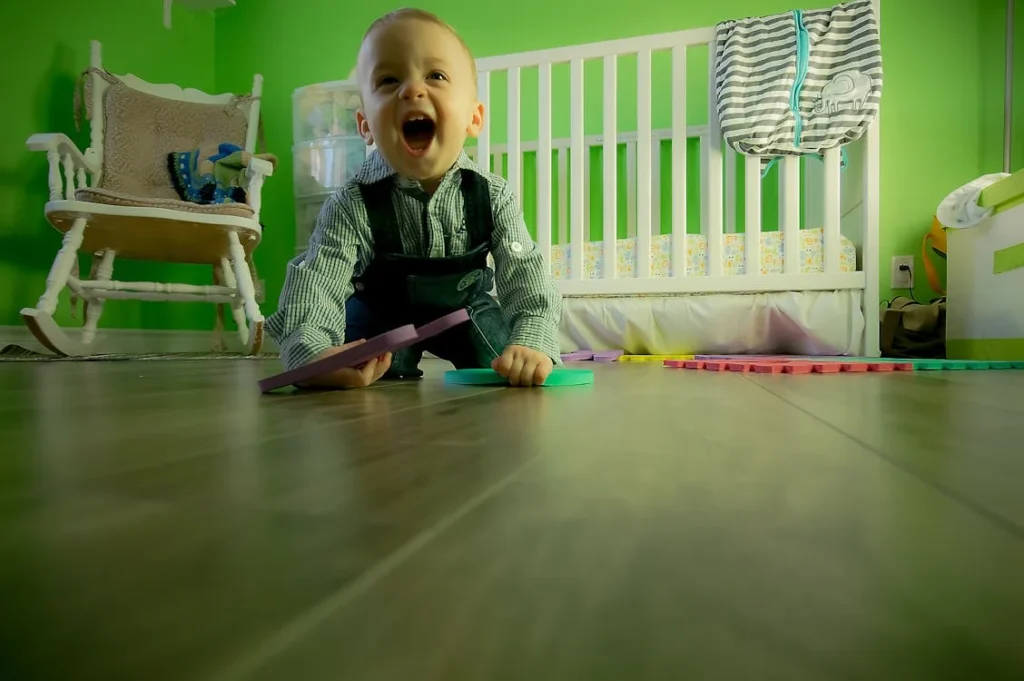Parenting terrible twos can be daunting but we are here to make it easier for you. The terrible Twos is a phase in a toddler’s development that can be enchanting and challenging. Your little one begins to navigate the path from infancy to childhood. The age of two often brings with it independence and lots of emotions. However, you have no reason to fear. After all, the challenges of this stage are merely a sign of your toddler asserting their newfound autonomy.
Their rebellion often leads these little children to delightful discoveries, making effective parenting strategies invaluable at this point. Patience meets play as parents find the best approach to nurturing their little ones. This comprehensive guide will examine the effective strategies parents should adopt for the terrible twos to help with toddler behavior issues.
Table of Contents
Set Limits and Be Consistent

- Expect your toddlers to throw tantrums and test your boundaries. Most parents are often tempted to give in to their children’s demands. The most important step is setting limits for their tolerable toddler behaviors. Setting clear boundaries ensures that you help your child understand what is acceptable and what is not.
- This also sets limits to their tantrums and prevents meltdowns. Your child also gains a sense of security. For instance, you may wish to stop your child from yelling or throwing things. Enforce your rules and be consistent. You may calmly explain to them the reasons why those actions are unacceptable.
- Consistent routines provide toddlers with stability and reduce the likelihood of tantrums and meltdowns. Knowing what to expect helps toddlers feel more in control of their environment. This feeling promotes a sense of security and comfort.
Use Positive Reinforcement
- Positive reinforcement involves acknowledging and rewarding desirable behavior. It would help if you always encouraged good behavior. This is especially true when your toddler exhibits positive behavior. This reinforces those actions and motivates them to continue behaving similarly. Positive attention can be a powerful tool in shaping behavior during the Terrible Twos.
- You can implement this by clearly communicating expectations. You may praise your toddler when they meet those expectations. Use specific and enthusiastic praise to highlight their efforts and achievements. Consider implementing a simple reward system to reinforce positive toddler behavior.
- Positive reinforcement builds a strong foundation for a positive parent-child relationship. It fosters a sense of accomplishment in toddlers and helps them understand the connection between their actions and positive outcomes. Positive reinforcement contributes to the development of self-regulation and a cooperative attitude.
Give Them Time to Calm Down

- Your little child may be throwing tantrums or having meltdowns. You should understand that they will eventually simmer down once they take their time. The next step is to teach them what happened and why their behavior was unacceptable. Ensure that you remain calm during this process. Raising your voice or yelling will only worsen the situation, often doing more harm than good.
Offer Choices to Foster Independence
- As explained earlier, the Terrible Twos often mark the emergence of a toddler’s desire for independence. Providing simple choices allows your child to feel a sense of control over their decisions. This can reduce power struggles and promote a positive sense of autonomy.
- You do not have to issue commands. You may instead offer choices within acceptable limits. For example, let your toddler choose between two outfits or two snack options. This empowers them to make decisions, and they will still adhere to your guidelines while doing so.
- Offering choices satisfies your toddler’s need for independence. It also promotes decision-making skills. It can decrease frustration by giving your child a sense of control. This results in reduced resistance to tasks that need to be done.
Effective Communication and Empathy are Important

- Toddlers often struggle to express their needs and emotions verbally. Effective communication involves being attuned to your toddler’s cues, which may be verbal or nonverbal. Use simple words to encourage language development.
- You should also acknowledge and validate their feelings. Empathy is crucial in helping toddlers feel understood. They need to feel supported during emotional moments. For example, never dismiss their tantrums. Instead, express understanding by saying, “I can see you’re upset.”
- Communicating effectively with your toddlers promotes a strong parent-child bond. They need to feel heard and understood. Empathy helps toddlers navigate their emotions, building a foundation for healthy emotional regulation and setting the stage for the development of effective communication skills.
Keep your Toddler Occupied
- Boredom is a primary reason for terrible twos behavior. Your child will likely seek your attention by acting out when bored. It would help if you prevented this from happening.
- Keep them occupied with the appropriate activities for their age. These may include simple games. Interactive toys can get them engaged for hours.
Always Stay Positive
- Undoubtedly, you may feel frustrated anytime you deal with terrible twos. Yet, you must ensure that you remain cheerful during this period. Remember that this phase in a toddler’s development is only temporary.
- Ensure you remain focused on the positive aspects of your toddler’s attitude. For instance, your child might throw tantrums because they want toys. Rather than criticizing them, you should praise their patience until they get it. Staying focused on the positives also ensures you savor this phase in your child’s life. After all, they grow up before you realize it.
Parenting Terrible Twos Phase is Temporary

As a parent, you must understand your little child. Implementing these strategies requires patience and consistency. Every parent understands the challenge of the terrible twos. Young children at this age are beginning to know how to assert their independence. As a result, they often test the limits of what they can get away with.
Remember that the Terrible Twos are a temporary phase. It would help if you had thoughtful guidance and positive reinforcement. These tips will help you navigate the challenges. It also enables you to lay the groundwork for a solid parent-child relationship.


